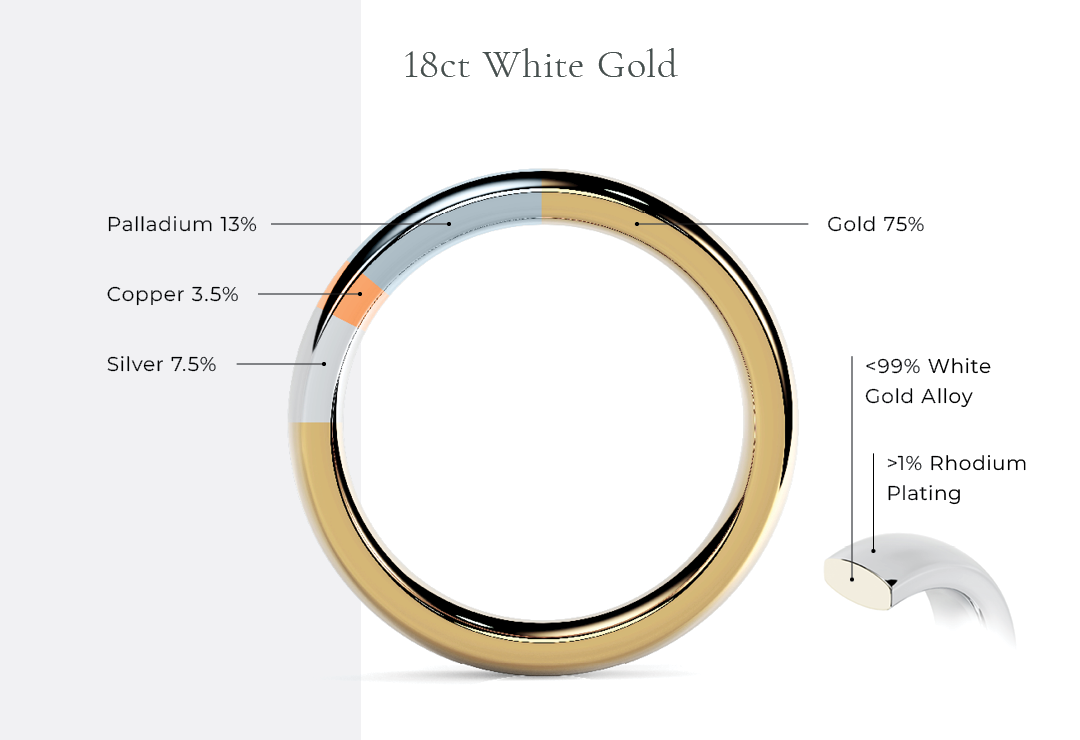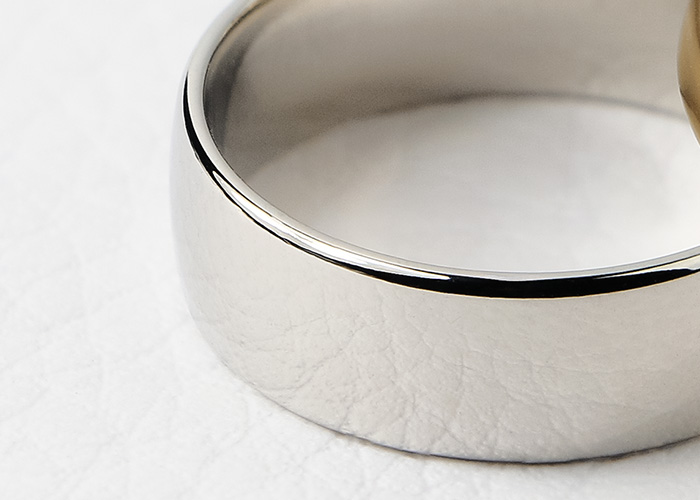18ct White Gold

Its bright, silvery appearance made it especially favoured in Art Deco jewellery designs of the 1920s and 1930s. Today, white gold is revered for its modern elegance and versatility, often used in engagement rings, wedding bands, and fine jewellery. Its ability to complement both diamonds and coloured gemstones continues to make it a popular choice. The enduring appeal of white gold lies in its sophisticated look, durability, and the timeless allure it brings to jewellery pieces.

Alloying White Gold
How much does a white gold ring cost?
Is white gold real gold?
Why choose a white gold ring?
| Pros | Cons | |
| Timeless and versatile, suitable for contemporary or classic designs | Slightly less durable than rose gold or platinum | |
| Bright white suitable for most fashion and skin tones | It does require maintenance, over time the colour can turn faint yellow and may need re-plating | |
| The bright white tone enhances a diamonds colour and clarity |
What’s the difference between 24ct, 18ct and 9ct gold?
24ct gold offers the highest purity but is softer, less durable and is golden yellow in colour, while 18ct gold is alloyed to strike a balance between purity, beauty, and strength, making it more suitable for wearable jewellery.
Can a plated white gold wedding ring scratch?
Yes, white gold rings can scratch and scuff, though their durability depends in part on their gold alloy and rhodium plating. 18ct white gold typically ranks around 2.75 on the Mohs scale of hardness. Pure gold itself is soft), but white gold alloys are created by mixing gold with metals including copper, silver and palladium, which increases hardness and makes it suitable for everyday wear. However, because white gold is still relatively soft compared to other materials, it can be scratched by anything harder on the Mohs scale, such as steel or ceramics.
Here’s what this means in practice for white gold rings:
- Scratch Resistance: White gold is less resistant to scratches than platinum but more scratch-resistant than yellow gold, thanks to its rhodium plating. Fine scratches can accumulate over time, and because white gold is plated for brightness, these scratches can dull its appearance as the rhodium wears away.
- Rhodium Plating Maintenance: Many people opt to have their rings re-plated every 1-2 years to keep them looking like new. White gold is plated with rhodium to give it a brighter, reflective finish. Rhodium is harder than gold, ranking around 6 on the Mohs scale, so it offers some added scratch resistance. However, this plating is very thin and can wear off over time, exposing the natural colour of white gold (a warmer yellowish tone).
- Durability and Longevity: While white gold may show more surface wear than platinum, it’s still highly durable, due to other metals adding strength. White gold’s hardness makes it a popular choice for intricate settings and detailed designs, as it maintains its structure well.
In short, while white gold is more susceptible to scratches than platinum, its durability, hardness, and ability to be re-plated make it a beautiful and versatile choice for a wedding ring. For a lasting, high-shine finish, periodic re-plating can help keep white gold looking bright and elegant over time.

Book a consultation
Please select a location you'd like to make an appointment.










































